Student life
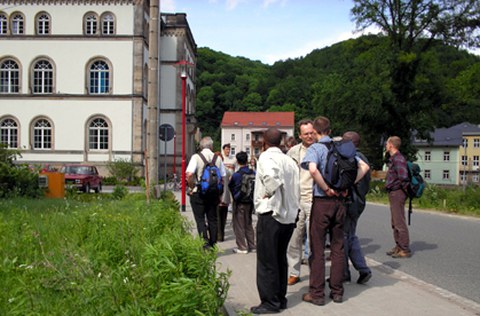
Tharandt (Main Building)
Tharandt, a picturesque small town surrounded by forests, was first mentioned in 1216 and became well-known as a health resort in the late 18th century. When Heinrich Cotta was allowed to transfer his private forestry education establishment to Saxony in 1811, he identified Tharandt as the most suitable place because of its quiet and beautiful location on the one side and its vicinity to the residence city of Dresden on the other. As early as in 1855 a railway link was completed. Nowadays. frequently running suburban trains take you to Dresden Central Station within 20 minutes.
Facts at a glance:
mean January temperature: - 1,2° C
mean July temperature: + 16,9° C
mean annual rainfall: 739 mm
mean height above sea level: 214 m
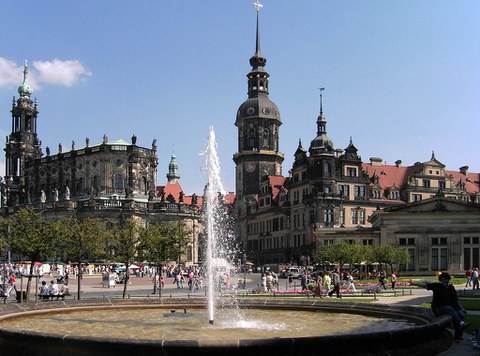
Dresden: castle and cathedral
Dresden, an old settlement of fishermen on the Elbe river, received its Freedom of the City in 1206. About 300 years later Albrecht the Brave, who was Duke of Saxony then, made Dresden his place of residence, laying this way the foundations for the development of Dresden into one of Europe's richest and most splendid baroque cities. The unique architecture of the Royal Castle, the world famous Zwinger and the Royal Opera House as well as the comprehensive scientific and art collections are still giving evidence of the power and wealth of the Wettin dynasty. Although Saxony rarely played an important role in European history, it always was one of the most progressive German countries. In the 19th century the Saxon capital Dresden founded its reputation as a city of science and culture, which it is still maintaining today.
Currently, more than 38.000 students are enrolled at 9 universities and colleges. More than 20 research institutions and several computer and high-technology companies have identified Dresden as their new site, utilizing the supply of well-trained workforce. And looking for culture, you will hardly find a place with more diversion than Dresden: 37 museums and art galleries, more than 30 theatres and concert halls and numerous discotheques, student clubs and cinemas are awaiting you. So if you get bored in Dresden - it's your own fault !
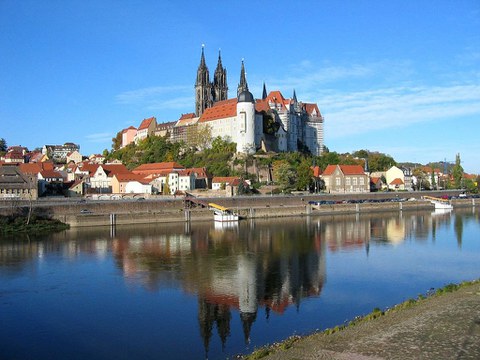
Meissen: Albrechtsburg and cathedral
The town of Meißen, which is over a thousand years old, is only a 40-minute train journey from Dresden. Beautifully situated among vineyards, Meißen represents a typical German medieval town. Beside the castle with its impressive cathedral you should not miss visiting the world famous Meißen Porcelain Manufactory, where fabrication of European porcelain was "invented" in 1708.
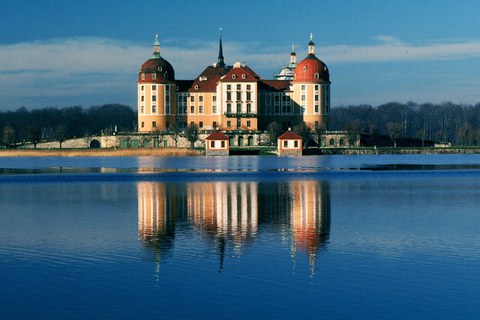
Moritzburg: Castle Moritzburg
North of Dresden, the Moritzburg lake district offers plenty of opportunities for hiking, bicycle trips, swimming and water sports. Moritzburg castle itself, one of the greatest and most luxurious hunting lodges of Saxon dukes, accommodates an interesting exhibition of forest and hunting history.
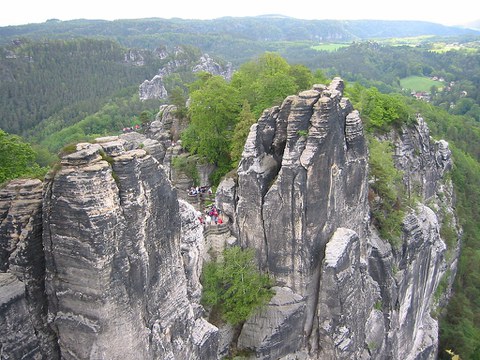
Saxon Switzerland
Just a one-hour train journey takes you to splendid rock formations of the Elbe Sandstone Mountains, also known as Saxon Switzerland. This 100 million year-old eroded landscape with its valleys, glens, chasms, rock reefs and table mountains is unique in Central Europe - a paradise not only for hikers and climbers but also a home of rare plants and animals.
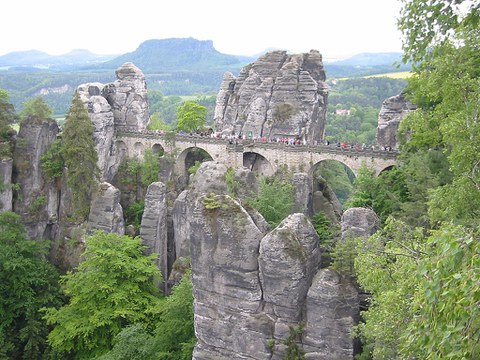
Saxon Switzerland

Erzgebirge Mountains
South of Dresden, the Erzgebirge Mountains, form the natural border between Germany and the Czech Republic. When its rich resources of silver, tin, copper, iron and hard coal, which once had been the basis for Saxony's wealth and power were exhausted, people searched for alternative activities: Woodcarving, fabrication of wooden toys and Christmas decoration as well as lacemaking are what the Erzgebirge Mountains today are famous for.
